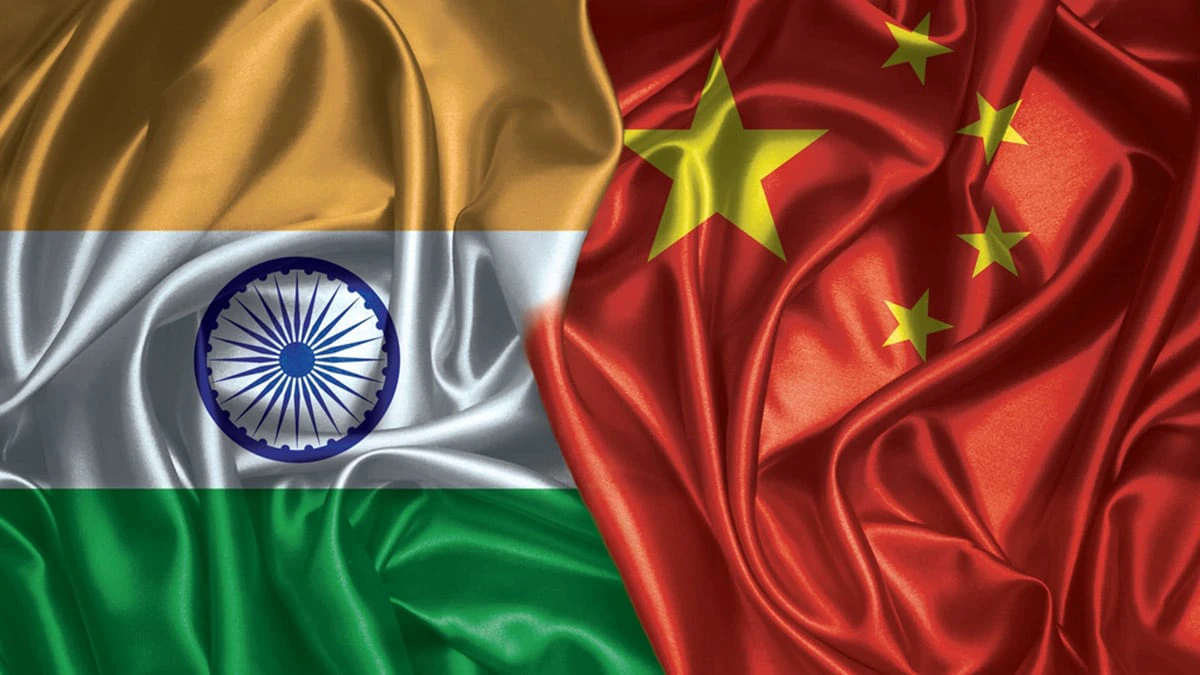
And today, it’s not just in common interest, I believe it’s in China’s interest as well.”
He added, “I’m still very much committed to finding a fair, reasonable outcome (to the standoff at the LAC). But one which is respectful of agreements, which recognises the LAC, and doesn’t seek to change the status quo.” Jaishankar stuck firmly to the Indian stance that unless the border is resolved, relations cannot be normal, while mentioning that the situation was ‘very tense and dangerous.’
The Chinese foreign ministry spokesperson, Wang Wenbin, responded to Beijing’s standard approach, by stating, “China has stressed multiple times that the boundary question does not represent the entirety of China-India relations, and should be placed appropriately in bilateral relations and managed properly.” The standoff in Ladakh continues since the Chinese intrusion in the summer of 2020.
A day prior, the Chinese had lodged a diplomatic protest over Prime Minister Narendra Modi’s visit to Arunachal Pradesh to inaugurate the Sela Tunnel. In the protest it reiterated its claims to the region and mentioned that ‘such moves will only complicate the unresolved boundary question’. India rejected the claim by responding that Arunachal Pradesh ‘was, is, and will always be an integral and inalienable part of India’.
The same day Rs6,621 crore were sanctioned for the construction of the planned frontier highway in Arunachal Pradesh. This is expected to enhance connectivity to border areas as well as foster socio-economic growth. In 2014, once this project was announced, China objected by stating, “Before the border problem is solved, we hope the Indian side will not take any action that could further complicate the relevant issue, so as to preserve the current situation of peace and stability in the border area.”
When India conducted its Agni-5 MIRV (Multiple Independently Targetable Re-entry Vehicle) test in the Bay of Bengal last week, China moved its research vessel, Xian Yang Hong 01, to monitor it. The vessel was deployed in international waters off the Vizag coast, under surveillance of the Indian navy.
The Chinese government mouthpiece, The Global Times, commented that the test indicates that ‘India’s main hypothetical enemy is China, with its goal of having missile coverage over China to enhance deterrence capabilities.’ Its assessment was true. It also linked the test to Prime Minister Modi’s visit to Arunachal.
Around the same time, The Global Times, in an opinion piece, hit out against India’s policies towards Chinese mobile manufacturers. The government had demanded that Chinese mobile companies be transparent and accountable to Indian laws. To ensure this they must have ‘Indian management, Indian distributors and local contract manufacturers.’ The Chinese media termed the Indian action as ‘trade protectionism.’
However, The Global Times ignored the fact that Indian directives were intended to curb illegal practices of Chinese companies. In December 2021, income tax authorities raided the offices of Xiaomi and OPPO, both Chinese companies, for violating rules and evading taxes. Earlier, Chinese firms running mobile loan applications and transport businesses were raided. The Minister of State for Electronics and IT, Rajeev Chandrashekar, had stated in the Rajya Sabha, in July last year, that Chinese smartphone makers including OPPO, Xiaomi and Vivo have been ‘found evading taxes worth Rs 9000 Crores.’
In October 2023, the Enforcement Directorate arrested four executives of Chinese smartphone maker Vivo, including one Chinese national, in relation to a pending case of money laundering. Chinese companies had assumed that they could act against Indian laws because of diplomatic protection from their government. Government scrutiny of Chinese firms increased post Galwan. Chinese mobile companies currently control almost 70 per cent of the market in India.
The Chinese protesting high-level visits to Arunachal Pradesh are nothing new nor unexpected. It had resorted to criticising the prime minister’s visit in February 2019 also. It had also objected when the US Ambassador, Richard Verma, visited the state in October 2016. Beijing had then warned Washington, mentioning, ‘We urge the United States to stop getting involved in the China-India territorial dispute and do more to benefit this region’s peace and tranquillity.’
In 2019, when the then US Ambassador, Kenneth Juster, visited Arunachal Pradesh, the US state department commented, “The Tawang visit highlights resolute US support for Indian sovereignty and commitment to local partnerships.” This irked the Chinese. Beijing repeated its objections even when the current US ambassador, Eric Garcetti, visited the state in November last year.
It had opposed the visit of the Dalai Lama in both 2009 and 2017. In 2017, the Chinese spokesperson stated, “India, in disregard to China’s concerns, obstinately arranged the Dalai Lama’s visit to the disputed part of the eastern part of the China-India border, causing serious damage to China’s interests and China-India relations.” In every case, India countered the Chinese claiming Arunachal Pradesh belongs to India. Chinese objections are ignored and counters issued as a matter of routine.
The competition for regional dominance continues between the two nations. When the Chinese satellite tracking vessel, Yuan Wang 5, docked in Sri Lanka, despite Indian protests, in August 2022, it was received by pro-China Sri Lankan lawmakers as also the Chinese ambassador to Colombo. The Chinese ambassador even published an article on the docking in a local daily. The intent was to display diplomatic victory.
This year, when India pushed Sri Lanka to not permit the Chinese research vessel from docking, New Delhi considered it a diplomatic win. When it was granted permission to dock in Male, The Global Times stated, “The diplomatic actions India previously took to pressure Sri Lanka against the Chinese research vessel seem unlikely to work with the Muizzu government.”
India’s engagements with Taiwan are on the rise, which is bound to irk China. Apart from inking an agreement to move Indian workers to Taiwan and honouring their Foxconn Group’s CEO and Chairman, Young Liu, with a Padma Bhushan, the government is establishing semiconductor plants in collaboration with Taiwan. Laying the foundation stone, the prime minister stated, “Leaders from Taiwan have also joined us in today’s programme virtually.” Unofficially, India is dumping the one-China policy.
India has reiterated that it remains unconcerned about China’s objections, protests and criticism. It will not normalise ties till the situation reverts to pre-April 2020. China has understood Indian intent, and also noted its confidence in countering them. India will not bend, will China?
The author is a former Indian Army officer, strategic analyst and columnist. Views expressed in the above piece are personal and solely those of the author. They do not necessarily reflect Firstpost’s views.

